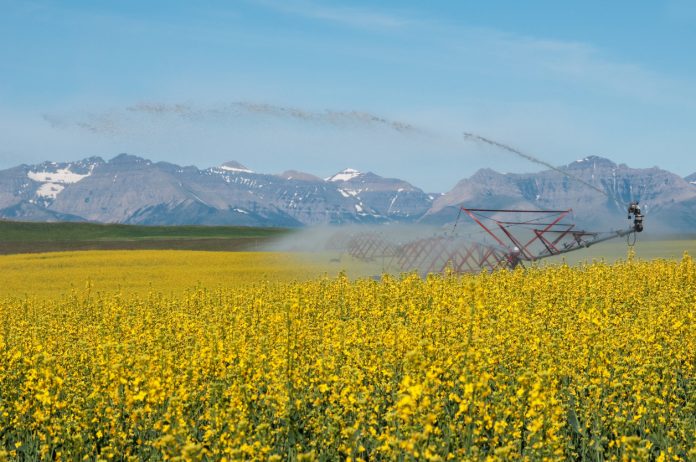RJ Sigurdson, Minister of Agriculture and Irrigation from the Government of Alberta’s Ministry of Agriculture and Irrigation, walks us through the priorities to support Alberta’s agriculture, a crucial economic driver for Canada
Alberta’s farmers, ranchers and agri-processors put food on the table for Canadians and people worldwide. The agricultural industry is one of the most important economic drivers and part of the very fibre of our history and culture.
In 2023, the industry employed more than 83,000 people, and Agriculture and Irrigation facilitated more than $3.1 billion in capital investment in the value-added processing sector.
My ministry develops programs and policies to help producers and agri-processors face the challenges of changing markets, regulatory regimes, and climate conditions. We take this responsibility seriously, and we’re rising to the challenge with a multi-faceted approach.
Sustainable Canadian Agricultural Partnership
The Sustainable Canadian Agricultural Partnership (CAP) is a five-year, $3.5 billion federal-provincial agreement, which includes $1 billion in federal programs and activities and $2.5 billion in cost-shared programs and activities by federal, provincial, and territorial governments.
The program helps build a stronger and more resilient agricultural sector. In Alberta, it represents a federal-provincial investment of $508 million in grants and programs over five years to support the needs of our agriculture and agri-food industries. Investments are cost-shared 60:40 between the governments of Canada and Alberta, respectively.
In 2023-24, Alberta invested more than $58.5 million in Sustainable CAP programs and initiatives to advance economic development and growth in the agricultural sector by attracting new investment, enhancing competitiveness in the value-added processing industry, and expanding irrigation capacity to boost crop production.
Attracting investment and diversifying Alberta’s agriculture
We introduced the Agri-Processing Investment Tax Credit to incentivize companies to invest in Alberta’s value-added industry. This 12% non-refundable tax credit is based on eligible capital expenditures to corporations investing $10 million or more to build or expand agri-processing facilities here. Several corporations have already qualified for the tax credit program, and the projects they are working on will further boost our ag sector.
We’re committed to continually improving incentives like the ag tax credit program. Work is underway on legislative amendments that would make it easier for registered partnerships to apply for the ag tax credit program using a single application. By making these changes, we’re signalling to investors that Alberta is a friendly, competitive place to do business and create jobs in value-added agriculture and food manufacturing.
Last year, we attracted a record amount – $3.1 billion – of new investment in our agri-processing sector to grow our economy, contribute to our food security and create more jobs for Albertans. In 2023, our value-added exports grew for the tenth consecutive year to $9.7 billion.
Boosting agricultural production
Over the past few years, our producers have faced drought conditions, particularly in southern Alberta. We’re putting a premium on ensuring Alberta farmers, ranchers, and communities have a reliable water supply when needed. Water is essential to growing crops, raising animals, and supporting and attracting business.
We continue to invest in expanding and modernizing our irrigation network, which will position our agriculture sector to lead Alberta’s economic growth while improving productivity and lowering costs.
Alberta has partnered with the Canada Infrastructure Bank (CIB) and nine irrigation districts to invest $933 million in expanding and modernizing irrigation between 2021 and 2028.
The largest one-time investment in irrigation in Alberta’s history will achieve water-use efficiencies to help grow the agri-food industry, expand primary agricultural production, and support a diversified value-added processing industry, all within existing water allocations.
Alberta has also partnered with the CIB, the Municipal District of Acadia, and the Special Areas Board to invest $7 million to investigate the feasibility of a large-scale irrigation project in east-central Alberta. This project can potentially add 108,000 more irrigated acres to Alberta’s current 1.8 million irrigated acres.
Alberta’s agriculture and irrigation: Cutting red tape
We’ve created one of North America’s freest and fastest-moving economies by cutting red tape by more than one-third to reduce costs, speed up the approvals process, make life easier for Albertans, and help businesses flourish.
For example, the Alberta Agricultural Products Marketing Council, a regulatory public agency, has removed 1,514 regulatory requirements (a 35% reduction) that govern Alberta’s 19 agricultural marketing boards and commissions. Many of these requirements are now positioned in bylaws that are made by these boards and councils instead of in government regulations.
This effort has substantively improved the regulatory-making process by significantly reducing timelines for amending regulations and ensuring a more sustainable and robust regulatory environment for marketing boards and councils to focus on growing and diversifying agricultural commodities domestically, nationally, and internationally.
Alberta has one of the lowest tax regimes in North America. We aim to make Alberta the best place to invest and do business and always look for opportunities to do more.
Agriculture is an important sector that contributes mightily to our economy. Alberta’s Government will continue standing up for and supporting our agriculture sector and doing more where we can.











